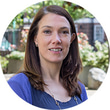- OT
- Professional support
- AOP
- “We are not just doing it for show, it is about making changes for the collective good”
Perspectives
“We are not just doing it for show, it is about making changes for the collective good”
Optometrist and AOP chairman, Dr Julie-Anne Little, on what the profession can do to support sustainability

01 September 2022
As consumers, over the last few years many of us have become increasingly more sustainability conscious. We have been recycling a lot more and embedding sustainability practices into our home lives as we more frequently consider how we buy, use and reuse the products we consume. As a result, it is only natural that this way of thinking has transferred into our professional workplace. I believe it is really important and timely that as a profession we are trying to create more sustainable processes across optics, and for employers there is much more recognition towards that. It has also become clear that customers really appreciate efforts being made in this area. But of course, we are not just doing it for show, it is about making changes for the collective good and doing our bit to promote sustainability because we want to be part of that solution and not part of the problem.
I feel that there are both sustainability and cost efficiencies to be had in other paper-based systems that we use in practice too, including the writing and sending of hard copy letters to patients and other healthcare professionals. This highlights, once again, the importance of IT connectivity between optometry and other healthcare professionals. In today’s age, creating secure ways of linking into the systems that are required in order for optometry to be embedded in this process should not be beyond the wit of man.
Much plastic and cardboard waste also arrives in practices, for example, from the packaging that spectacles and contact lenses come in. Ensuring that there are systems in place to recycle or reuse this, as well as the products, is important.
I have heard about examples of contact lenses recycling schemes that provide consumers with the opportunity to recycle their lenses and associated packaging in practice, but I think much more needs to be done in relation to spectacles. While consumers are increasingly welcoming sustainable changes, these processes have to be made easy for them. Nobody thinks recycling contact lenses and their packaging is a bad idea, but it is important that you make it easy to do in order to increase awareness and take up. The same goes for recycling spectacles.
At Ulster University, the eye clinic has adopted a paperless model and recycles as much as possible, in line with the university’s wider sustainability ethos. All staff across the university are encouraged to act in a paperless manner. We are not allowed personal printers and share a network printer system, for example. In this area, there is nothing like the disruptor of COVID-19 and people working from home to make you use electronic versions of documents that you would have previously printed without consideration. I think there were three groups pre-COVID-19 – those who printed everything, those who preferred paper and those who used electronic anyway. And for those in the first two groups, they have had to adapt – nothing would have swayed them apart from something significant like a pandemic. The university also promotes ways to get to campus without using your personal car – this could include cycling, public transport or car-pooling.
I think there is opportunity for practices to do more in this area in regard to patient transport to their practice. Many community practices will be on efficient bus routes that they could inform patients about. I have worked in practices where the receptionist would advise patients on transport methods such as this when they see their address in the booking process, but this is normally very ad hoc, and practices could showcase these efforts more effectively, highlighting options such as nearby electric car charging points, or bike rack facilities, for example. These things apply to staff too. However, trying to encourage staff to consider more sustainable travel options needs to be supported by changing/shower and storage facilities to make this achievable.
The increased use of single use plastic and the waste created has been a really unfortunate side effect of COVID-19. I’m sure we have all been on walks where there have been masks dropped on the ground as litter. Of course, during the acute phase of the pandemic when personal protective equipment (PPE) including aprons, gloves and masks were required and adopted by many, we needed this and were thankful for it. However, personally, I now welcome the phasing back and reduced use of PPE, reflective of a proportionate response to current risks.
About the author
Dr Julie-Anne Little is an optometrist, chairman of the AOP Board and a senior lecturer in optometry and vision science at Ulster University.


Comments (0)
You must be logged in to join the discussion. Log in